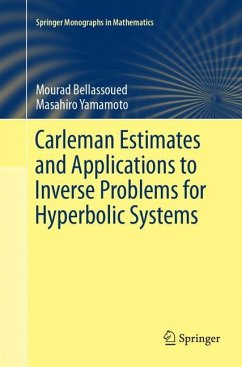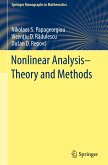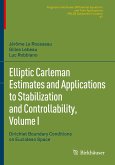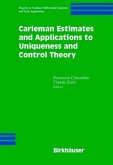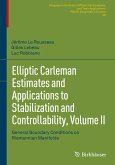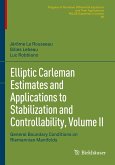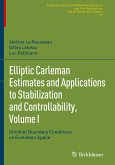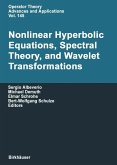This book is a self-contained account of the method based on Carleman estimates for inverse problems of determining spatially varying functions of differential equations of the hyperbolic type by non-overdetermining data of solutions. The formulation is different from that of Dirichlet-to-Neumann maps and can often prove the global uniqueness and Lipschitz stability even with a single measurement. These types of inverse problems include coefficient inverse problems of determining physical parameters in inhomogeneous media that appear in many applications related to electromagnetism, elasticity, and related phenomena. Although the methodology was created in 1981 by Bukhgeim and Klibanov, its comprehensive development has been accomplished only recently. In spite of the wide applicability of the method, there are few monographs focusing on combined accounts of Carleman estimates and applications to inverse problems. The aim in this book is to fill that gap. The basic tool is Carleman estimates, the theory of which has been established within a very general framework, so that the method using Carleman estimates for inverse problems is misunderstood as being very difficult. The main purpose of the book is to provide an accessible approach to the methodology. To accomplish that goal, the authors include a direct derivation of Carleman estimates, the derivation being based essentially on elementary calculus working flexibly for various equations. Because the inverse problem depends heavily on respective equations, too general and abstract an approach may not be balanced. Thus a direct and concrete means was chosen not only because it is friendly to readers but also is much more relevant. By practical necessity, there is surely a wide range of inverse problems and the method delineated here can solve them. The intention is for readers to learn that method and then apply it to solving new inverse problems.
"The book under review is devoted to Carleman estimates and their applications to get stability estimates for inverse problems of determining spatially varying coefficients or source terms in hyperbolic systems with finitely many measurements. ... This is a nice book on applications of Carleman estimates to inverse problems for hyperbolic systems." (Dinh Nho Hào, zbMATH 1412.35002, 2019)

